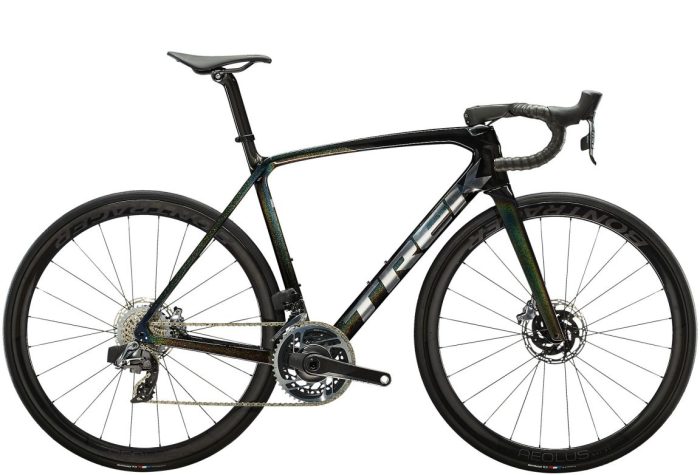Various Types Of Bike Computers
Data’s significance is influencing every part of our lives as we speak because we live in a technologically advanced society. Cycling is following this pattern as well. Therefore, it’s becoming more and more crucial for cyclists to collect ride data. They use it to monitor their growth and performance and to get better at riding.
Bike computers are ideal for someone who wants to know more about the stats and route of their rides because they are made specifically for cycling. The safety issue of not tampering with your watch is significant, plus they are more waterproof (and have better battery life) than trying to install a phone.
A quality bike computer can help you enjoy cycling more. Bicycle computers come in a few different varieties, each with unique capabilities. While others are really sophisticated and provide you with all the cycling-related data you could ever desire, some are minimalistic and only provide you with the most basic information.

MAJOR OPTIONS:
When choosing the best approach to obtain cycling feedback, you have a lot of options. And there are more possibilities now because of how quickly technology is developing. Instead of obsessing over every feature, this article provides an overview to assist in reducing your options.
For data and navigation during a bicycle ride, you have three choices:
- SMARTPHONE – An economical option to get basic input on a Smartphone is through a cycling app, but battery life can be an issue.
- GPS-ENABLED FITNESS TRACKER: Ideal for multisport users is a GPS-enabled fitness tracker or watch with cycling capabilities.
- HANDLE BAR BIKE COMPUTER: Bike computers that mount on your handlebars are excellent for serious road and trail riders because they have a big screen, a long battery life, and an interface that is tailored specifically for cyclists.
TYPES OF BIKE COMPUTERS:
The various types of bike computers have evolved alongside the various functions of bike computers. These varieties now vary in terms of connectivity, analogue vs. digital, GPS vs. no GPS, and other features.
We’ll examine some of the most well-liked bike computers and learn more about them.
Read our relevant guide:
ANALOG BIKE COMPUTER:
An Analog bike computer is known as Omata, special bike computer. Its mechanical hands display information about time, climb, speed, and distance travelled based on precise GPS data. Read on to see why it is enjoyable.
Just begin riding, and the hands will advance. Analog indicators differ from their digital counterparts in that they seem strangely organic. After riding with Omata for a while, it becomes very instinctive to “see” the angle of the hands rather than “reading” the numbers.
The dial has a lot of depth and is beautiful to look at in all kinds of lighting. Although it is lovely, it doesn’t demand attention. It rapidly became an intrinsic part of my bike, in a really natural way. I enjoy that.
You may easily download your ride data using the Omata app. The ride is saved as a FIT file, which is a common format for fitness and health apps. You can email your ride to GoldenCheetah for more analysis, integrate it into Cyclometer, or post it to Strava. Omata can be linked to external ANT+/Bluetooth sensors, such as a power meter or heart rate monitor, using the app.
The Omata One is a viable option if you’re searching for an alternative to today’s hyper-connected cycling computers.

WIRED BIKE COMPUTER:
With Wired Speed, a sensor may send data about a bicycle’s speed to a computer over a cable. “Sigma Sport combines inventive design with precision engineering to represent German technology at its best level.”
Most of these same capabilities are also available on wired computers. The main distinction is the requirement for wiring to be run around your bike. If you only have a front wheel speed sensor, this isn’t a big deal. However, if you add cadence or use a generator hub, the wiring lines get very crowded and challenging to keep “clean” on your lovely new bike.
If you have a limited budget, can run a wire down your bike, and don’t worry too much about aesthetics, wired bike computers are the ones to choose. They are an improved standardization of bicycle computers. They are more likely to have better features than wireless bike computers because they are more recent on the market.

WIRELESS BIKE COMPUTER:
This type of bike computer operates in an easy manner. A signal is produced each time a magnet on the wheel moves past a sensor on the fork. Based on the wheel size you gave it during initial setup, the bike computer calculates your speed based on the interval between those signals.
These bike computers are for you if you’re worried about your bike becoming tangled up in cables while you’re riding, care about it looking well, and have more money to spare. These two units are where wireless communications are sent. Even though they use battery more quickly, not using a cable to link the handlebars and sensor is safer and more cost-effective in the long run.

GPS – ENABLED BIKE COMPUTERS:
Based on extensive testing by our knowledgeable team of road and mountain bike testers, these types are the top GPS bike computers.
Without the use of cables or magnets, GPS cycling computers correctly calculate speed, distance, and time based on satellite tracking of your location. You can submit the route-recorded information, together with heart rate, cadence, and power statistics, to a ride-logging site to assess your performance for entertainment or training purposes.
You can track your rides on apps like Strava, assess your performance, and, in some situations, use GPS bike computers to navigate.
BRANDS IN BIKE COMPUTERS WORLD:
Similar brands to those that dominate the vehicle GPS market dominate the cycling GPS market. The leading company is Garmin, but other names including Wahoo, Polar, Bryton, Sigma, Lezyne, and CatEye also make GPS-enabled products.
GARMIN:
The American tech business Garmin, formerly known as “ProNav,” was established in 1989. The business specializes in wearable devices including smart watches and fitness trackers as well as GPS technologies.
But when it comes to bike computers, Garmin is known for its high-end, high-tech devices that support both ANT+ and GPS. The majority of professional cyclists favor their brand because the majority of their models are pricey and high-quality.
The two leading models that the majority of performance-oriented riders choose are the Garmin Edge 1030, the Edge 820 and Edge 520. But since these models cost several hundred dollars, they rank among the most expensive ones available. This is caused by the wealth of features, nevertheless, including the precise navigation, common training data, USB and Bluetooth connectivity, ANT+ compatibility, and many more.

WAHOO:
When it comes to bike computer businesses, Wahoo Fitness is the “new kid on the block.” Athletes like Chris Froome utilize their KICKR trainer for indoor training. It was founded in 2010 and is the official indoor trainer of Team Sky.
Wahoo ELEMNT devices provide a simple setup process that is quick and hassle-free, allowing you to focus on your ride, race, or training. Starting is easy, wireless, adjustable, and carried out via a simple smart phone user interface. You can simply customize your ELEMNT gadget to match your unique training objectives and get the most out of every session by using the free ELEMNT app.
The Wahoo Element and its replacement, the Element Bolt, are possibly their most popular models of bike computers. Both models include an integrated exercise and are aimed at the Smartphone generation, but at a whopping $300, the price will undoubtedly make you cringe.

CATEYE:
CatEye is a Japanese business that was established in 1954 and is focused on producing bike computers, reflectors, lights, and other riding accessories.
CatEye Smart Computers remove distraction from pointless data while utilizing the capabilities of your phone to give you GPS mapping and data recording so that you can share when the time is right.
It produces inexpensive, mid-range, and expensive kinds of cycling computers. It offers smart PCs that you can connect to your cellphones as well as connected and wireless computers. Its CatEye Velo, Enduro, and Strada models are among of the most well-liked ones.

CADENCE SENSORS:
To get the most out of their workouts, cyclists and bikers must use cadence sensors. Similar to a speedometer or pedometer, these gadgets enable cyclists to quantify energy output in rotations per minute (RPM).
Simply said, cadence is the rate at which you cycle. This is expressed in revolutions per minute, or rpm, by cyclists. Therefore, cycling at 60 rpm requires one foot to complete a full circle around once every second.
Fundamentally, cadence is quite straightforward: it’s the number of rotations your pedals do per minute when you’re riding. But it doesn’t take much time cycling to see that people pedal at varying speeds. Professional cyclists appear to pedal quickly when you watch them compete, especially on flat terrain.

Types of Bike Computers FAQs:
Is it worth getting a cycle computer?
Pros. Bicycle computers excel where other smart gadgets fail because they are weatherproof, crash-resistant, and engineered to fit on handlebars. For certain riders, recording GPS data is also crucial, and bike computers have plenty of battery life to accomplish just that. Also easy to use are today’s huge touchscreens.
How accurate are cycling computers?
It commits to transmitting the GPS signal into space with a 95% probability and a worldwide average user range error of less than or equal to 7.8 meters.
What should I look for in a bike computer?
Typical bicycle computers include Average speed, Maximum speed, an average rate, Elapsed time, Trip distance, Odometer, Clock, appropriate for wireless.
Which bike computer do the pros used?
Bike computers are used by the professional peloton to constantly monitor each rider’s performance throughout the Tour de France.
What is the bike computer called?
A device attached on a bicycle that calculates and displays trip information, similar to the instruments in a car’s dashboard, is known as a cyclocomputer, cycle computer, cycling computer, or cyclometer. For convenience, the head unit, a computer with a display, is typically fastened to the handlebar.
What is the point of bike computer?
During your cycling activity, a bicycle computer measures and shows data such as altitude, speed, distance travelled, and occasionally cadence or heart rate.
Does cyclist use GPS?
Several satellites are used by the so-called global positioning system (GPS) to pinpoint a sensor inside a gadget to within a few meters. Cycling enthusiasts can now use technology to precisely measure their distance travelled or remaining.
Can you use Garmin Connect as a bike computer?
Using a new program from Garmin, you can use your Apple iPhone or Android smartphone as a cycle computer. While riding a bike, Garmin Fit shows your route, speed, pace, distance travelled, elevation, time, and calories burned.
Which Bike computer has the best battery life?
Garmin Edge 830 Sensor Bundle is the best overall.
Think about the kind of battery your gadget will require before making a purchase.
The Bryton Rider 450E is a top-notch rechargeable computer on this list with a battery life of up to 32 hours.
Contact Us
If you have any suggestions or advise, please feel free to reach us via our Contact Us here.



